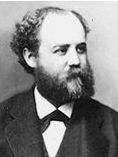THERE is an interesting side to Cuprum which deserves a more thorough study than has as yet been bestowed upon it.
If we examine the symptoms of Copper, we shall see that despite their stormy, convulsive character, they express a tendency towards torpidity, prostration or lack of reaction.
Looking over the symptoms of spasm, we find them bearing a superficial resemblance to Belladonna and Stramonium, when resulting from repercussed eruptions, with consequent. Meningitis. But the cases calling preferably for Cuprum, are more serious. There is not the impetuous haste and quick motion of Belladonna, and though there may be fear on awakening, clinging to those about the patient, the deathly pale face, and paralytic weakness afterwards, are too severe for Stramonium to cure.
The uraemic Eclampsia of Copper, as in Cholera, is characterized by loquacious delirium and Asthma; but very soon apathy sets in, with cold tongue and breath, and death-like prostration.
Again, in Gonorrhoea there is slow recovery : discharge changeable now more, now less; urethral orifice glued.
Copper develops a fever, which is slow to yield, tending towards Typhoid or becoming of an irregular, relapsing type.
To cap the climax, Haynel, with his wonted astuteness, used Cuprum in all diseases traceable to exhaustion from a combination of overwork with mental worry. Long-lasting weariness; slow recovery.
How often is the busy practitioner, fretted with an accumulation of petty annoyances, deprived of needed sleep, and hurried in his day’s work, so exhausted that he is reduced to the verge of typhoid. Medicines fail to relieve him. In such a case cuprum should be thought of as a probable similimum, second to none, not even to Sulphur.
The analogues of Cuprum in imperfect reaction, may readily be distinguished. Hahnemann placed camphor and Copper side by side in Cholera-collapse. Both are characterized by coldness, blue surface, deathly nausea, suffocation, epigastric distress and cramps. The FORMER, however, suits more with significant absence of vomiting and purging; the LATTER, with predominant spasms and cramps, vomiting relieved by sips of cold water.
Arsenicum holds a supplemental relation to Cuprum, following it in Cholera, and relieving the protracted exhaustion from its misuse.
With sulphur, its relation is very intimate, as shown in the defective reaction. In fevers, Sulphur has been found essential when, despite the most careful choice of a remedy, the heat continues unabated, or, at most, remits slightly, with total absence of critical perspiration. The patient becomes more and more drowsy, thought is sluggish and a typhoid condition develops. Cuprum is not greatly dissimilar in persistency, but causes more an irregular but oft-repeated renewal of the fever, with dry, withered skin, pale or grayish face. If the lungs are involved, Paralysis may exhibit itself by sudden difficulty in breathing, followed by great prostration.

